
Sarcodiotheca gaudichaudii
Succulent Seaweed
Willow Point, Strait of Georgia, British Columbia, Canada
22 October 2020
Observations/interactions commenced at 3:35am PDT
Low Tide 3.3 feet at 03:51 PDT (measured at Campbell River Tidal Station)
Weather: Clear, no precipitation, wind NW 5-10km/hour, sea rippled, temperature 5˚C, relative humidity 74%.
Phase of Moon: Waxing Crescent (approx. 27 hours before First Quarter at time of observation/collection); (Previous Phase, New Moon, 16 Oct 2020 at 12:31pm PDT: Next Phase, First Quarter, 23 Oct 2020 at 6:22am PDT.)
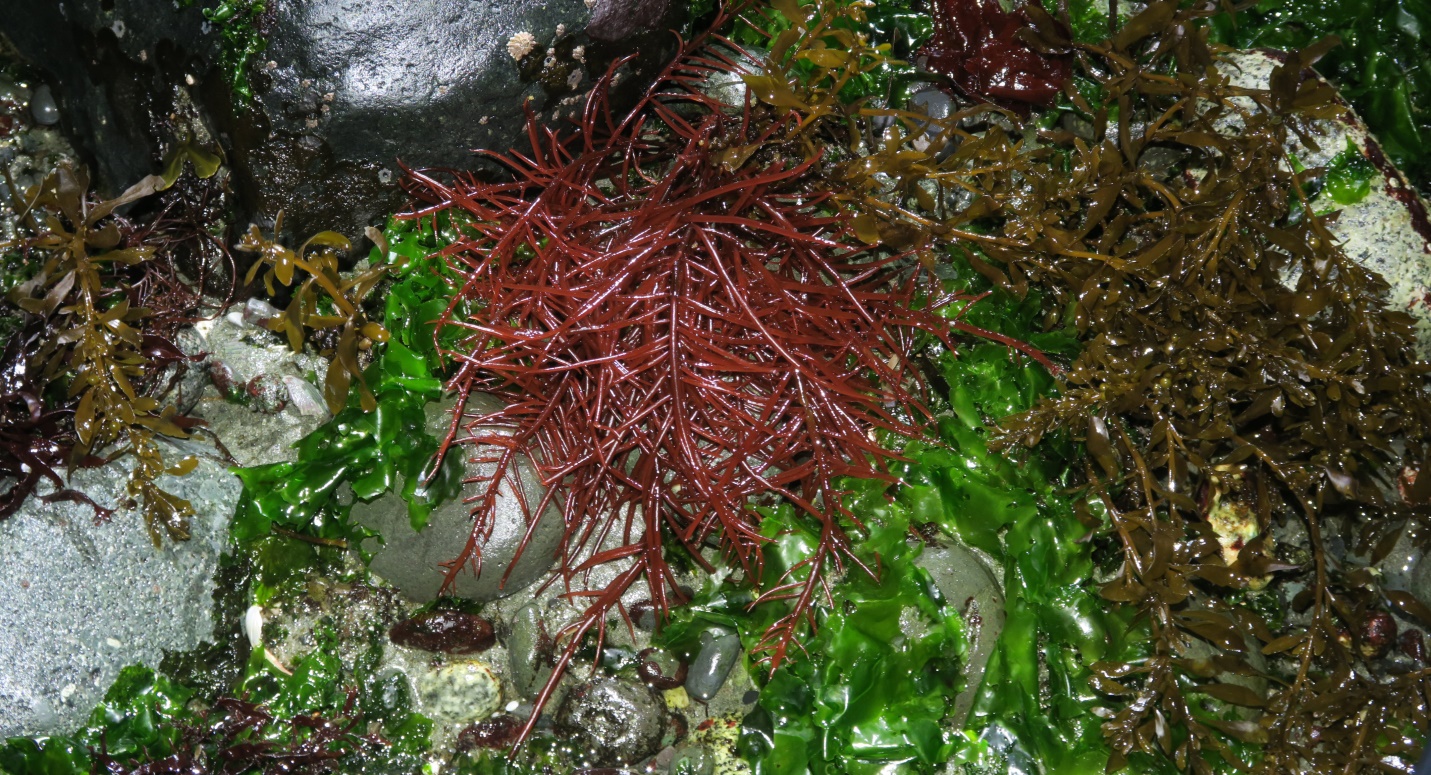
Figure 1: Sarcodiotheca gaudichaudii – a night visit in situ with Succulent Seaweed. The multi-branched red seaweed (at photo center) contrasts highly with its neighbors the brown algae, Sargassum muticum, and the green algae, Ulva fenestrata. Some blackish-red Tar Spot Seaweed and deep burgundy Turkish Washcloth algae fill in the color palette. Cobbles here are surrounded by pebbles and sand. Willow Point, Strait of Georgia, B.C., Canada. October 22, 2020. Photo ID 27260 ©Seaweedwhisperings.com
Note:
All observations were done in-situ. We interacted with the live seaweed in the low intertidal zone at night (the time of the low tides at this season). The seashore here is a mix of cobbles (varying sizes) with sandstone ledge outcrops and isolated sandy patches. Large glacial erratic boulders are also scattered sparsely on the beach.
Person 1:
Smooth, sensuous look and feel.
Purple-y brown coloration.
Shiny.
Looks like a millipede – many arms and legs.
Extending, sharing, giving out…, to the world.
Happy and content.
Pleasing and crisp to bite into – not much taste but pleasant to chew. Contrasting with many other types of seaweed, I have no impulse to spit it out and chewed it fully and swallowed.
No smell.
This
seaweed is not trying to hide anything about itself; it’s, “here
I am.”
Not concerned about what others think of it; but at
times, maybe it should be aware and more cautious.
Succulent equals full – there’s a fullness to succulence and that fits this seaweed.
Silent?
Communicates with movement / actions?
Unassuming, discoidal holdfast.
Somewhat decorative but not overdone.
Thrives in winter? Less desiccation due to timing of low tides and less temperature variation.
Lack of orientation when exposed (out of water) but dancing when in its oceanic element.
The dance is in no particular direction.
Watching Person 2, I was able to relate her outstretched arms with the habit of this seaweed. There is a contrast between the stiff arms, and the flow of the entire organism. This gives it a distinctive type of posture and dance.
I kept looking for the lights marking our parking area to help with my orientation; I felt concerned at first with how to find our way back in the dark.
Naïve sexuality; not yet aware of its developing sexuality.
“Sarcodiotheca” – smooth, dancing sounding name; “guadichaudii” – someone’s surname, fun to speak or say.
“Succulent Seaweed” – this is just an apt description of the appearance and feel of this seaweed.
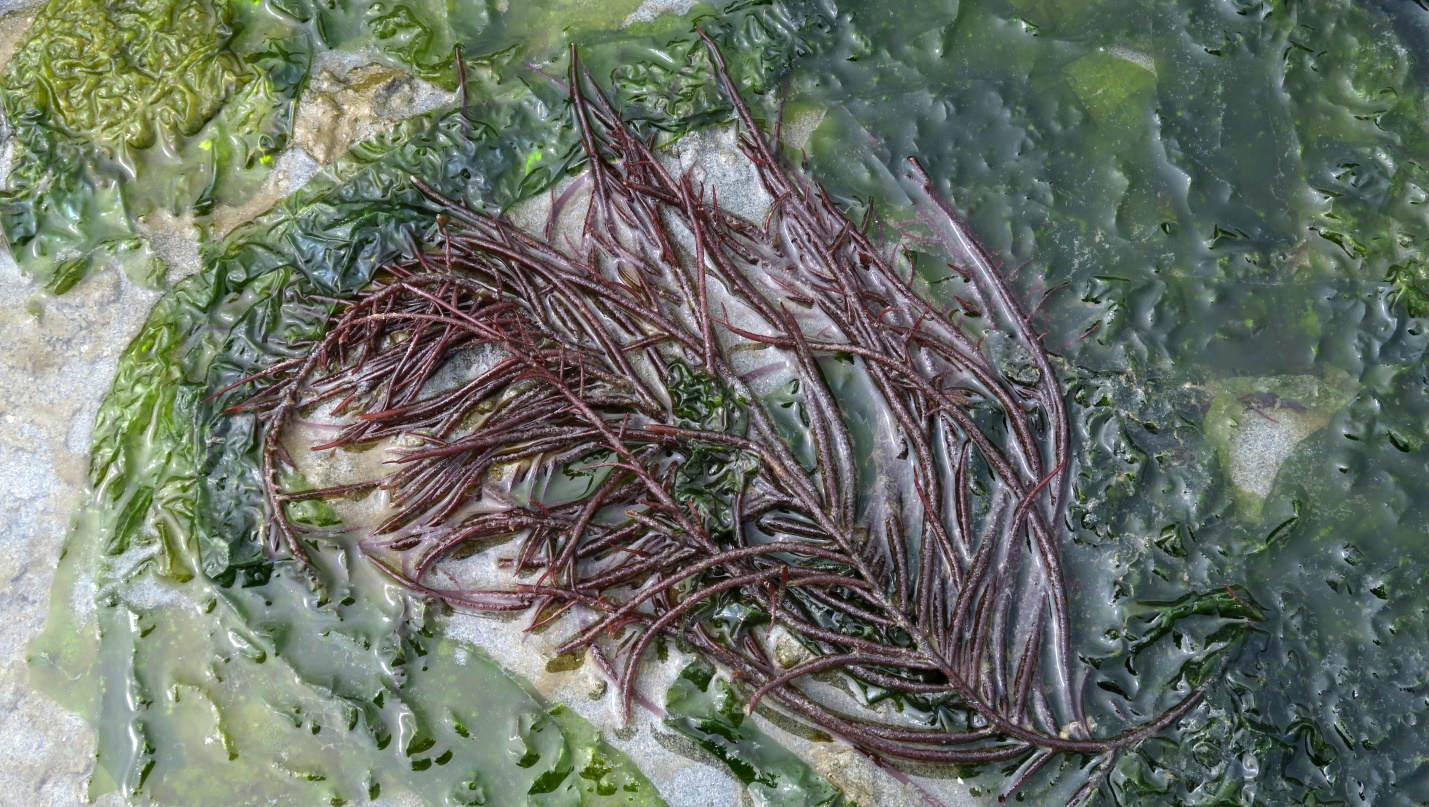
Figure 2: A graceful ‘spray’ of Sarcodiotheca gaudichaudii , or to another eye, the ‘millipede-like’ arrangement of thalli and branches, is seen here in very shallow water. Bazan Bay, Haro Strait, B.C., Canada. May 24, 2020. Photo ID 27261 ©Seaweedwhisperings.com
Person 2:
Full darkness. Night time (or very early morning) 3:15 a.m.
No moon – it has already set.
A clear night sky.
Big Dipper! I noticed it immediately and subsequently my awareness went to it, and then the North Star it points to, each time I stepped out into the night as we travelled to the beach for our observations (getting in and out of vehicle).
Starry night – lovely. We have a clear view of these oh so distant “night lights”. BUT the stars do not light the seaweeds. Without our headlamps, our sense of sight would be very limited in this interaction.
Sarcodiotheca gaudichaudii, you are a red color, a rich red color.
Ladder.
On one plane.
‘Rungs” at tip of stem are shorter; other ‘rungs’ are much longer – good for climbing?
Climb how high?
Climb to the stars?
Looks smooth.
Rounded cylindrical blades.
Looks resilient (like some kind of light rubbery texture) but also snap-able, flexible only to a certain point.
Touch is smooth, as well as the look.
The blades taper to a point, at each end – where they attach and at their tips.
Ruffling up the stems with my fingers, the blades are slippery, fingers slide off, can’t hold on.
Beautiful deep red – all one tone.
Some other individual plants nearby, are bleaching with age; their color is varying shades of dull brown, beige, and pink.
I tested it out, yes, the blades do snap off crisply.
Stem is solid; the same type of tissue all through.
Crunchy texture. Pleasant to chew.
Taste of sea and salt and mild cucumber.
I lifted up the stem, oh, NOT on one plane! In water (or suspended in air by my holding it) the branches extend from the central stem/stipe in all directions. Not in any precise pattern, such as opposite or alternate, but radiating out in a way that is pleasingly balanced but not precise.
Some branches are longer, some shorter.
Some go east; some go west, others north and south. Use of these ‘directional’ words, the four main cardinal points, was intentional as they felt to be the only adequate descriptor for this. These words felt somehow a bit ‘odd’ as descriptors and also truly essential to the nature of this seaweed.
In the water Sarcodiotheca gaudichaudii looks lovely – upright stems with red spindles pointing out all directions, swaying in the water.
Predators – I don’t see evidence of them even though this alga is tasty.
But you are vulnerable to sudden force – break off. Yet the broken off pieces seem still very “alive”. Would you replant yourself…? No, I doubt you could re-anchor, but you would carry on growing without being anchored – as long as you were in a suitable environment. How far would that growth take you? Unanchored and afloat – I think only until you could successfully reach reproductive age.
This whole clump of Succulent Seaweed is attached to a small cobble; ten or twelve main stems arise from an irregular clumpy discoidal holdfast.
Exposed and in the light wind your branches tremble a bit, quivering, pointing. This reminds me of a compass needle as it responds to magnetic north.
Direction!
Finding your way.
Knowing which way to head.
Heading.
Bearing, get your bearings.
Is it a fundamental part of you, to KNOW your “bearings”, Sarcodiotheca?
Or, are you discovering those bearings, that certain heading, your right orientation – and once that is achieved you have fulfilled your purpose. Like a compass and the magnetic field of our planet, is your aim to be aligned with, to interact with the earth’s/the ocean’s hidden forces?
Each stem is like a conical shaped set of glistening red branches; the branches are all reaching straight out, stiffly.
These branches are stiff yet somewhat flexible.
Pointed tips.
Point?
Pointing the way?
That way? This way? Which way?
What’s the point?
You like to be immersed, wet, not exposed to air too long.
This is a slippery spot to get up from! My rain pants slide and slip on my waterproof ‘sit-upon’; this feels so similar to the Succulent Seaweed - slippery.
The tapered structure of the branches where they meet the axis, and the slippery exterior, allows this seaweed to lie very flat when the tide is out – these two features ensure it will be closest to the substrate and any available moisture.
I explored the area now to view other individuals of this seaweed species immersed in water.
It stands with branches stretched out – all directions. Waves and moves with the gentle lapping motion of the water this night.
This movement is distinct; the word “sashay” comes to mind, and yes, that is a description that fits. When one sashays, they glide, move, walk in a nonchalant but rather noticeable way with broad swings of the hips and shoulders. This seaweed sashays in the water. Sashay is a ‘call’ in square dancing terminology; square dancing has type of ‘stiff’ movement to it that matches this seaweed. Many of the dances are arranged in squares or circles or opposite lines – orientation with your partner and other dancers is all a part of this type of dance. This ordered-ness and pattern reminds me of this seaweed; it loves to dance, but within a set parameter only.
Walking back to our vehicle I encountered a patch of sandy beach. I was ‘moved’ to spread my arms out fully – and ‘dance’ across the sand, turning in gentle circles – twirl.
Stretching arms out feels “right”, feels good.
Arms down at my sides feels wrong.
Twirling, that word fits! And so does sashay. Both movements happen as this plant “dances” in the water.
I can relate to how this seaweed feels when it dances, twirling and sashaying in the ocean waters. The water lifts and presses back on the branches and interacting with these forces feels good. The seaweed feels its vitality and is simultaneously oriented to its surroundings.
Arms out, twirling, sashaying, this can be playful – for certain. But does this “play” also serve other purposes?
Does the “play” also get some “work” done?
Does the “play” invite others to interact?
Are the “others” simply the water and its host of nutrients, or are “they” other seaweeds, small fishes or other sea creatures, as well?
Twirling, playing, sashaying, seeking your bearing, pointing – are you “testing”?
Testing what you can do?
Testing what your strength is?
Testing what your limits are?
Are you testing how the world responds to you?
I think that is your ‘work’ – to “be testing” and trying out and to be interacting with the forces of the elements is a physical pleasure for you.
And you DO NOT have to decide yet. No conclusions must be drawn. One direction might be good, but then again, this other one feels good, too. Oh, and yes, you’d like to try yet another one, too.
Being in the state of testing out, of interacting wholly – that is a place you feel right ‘at home’.
And if you snap off or are broken off, it seems like you just carry on. You’ll test out how that is, too. A part of you may have lost the “way back”, so how now will orientation be regained? Is that always the challenge for you?
“Succulent Seaweed” – this name is an apt description; the blades look plump and like land-based succulent plants.
“Sarcodiotheca” is quite musical to say. It has a pleasing number of syllables and it also sounds like something heavy – “sarcod”, lightened and brightened up by the rest of the name – “iotheca”.
Lightened and brightened…, yes, light and bright – like the stars on this night – the branches of this seaweed radiate out like rays of light from a star.
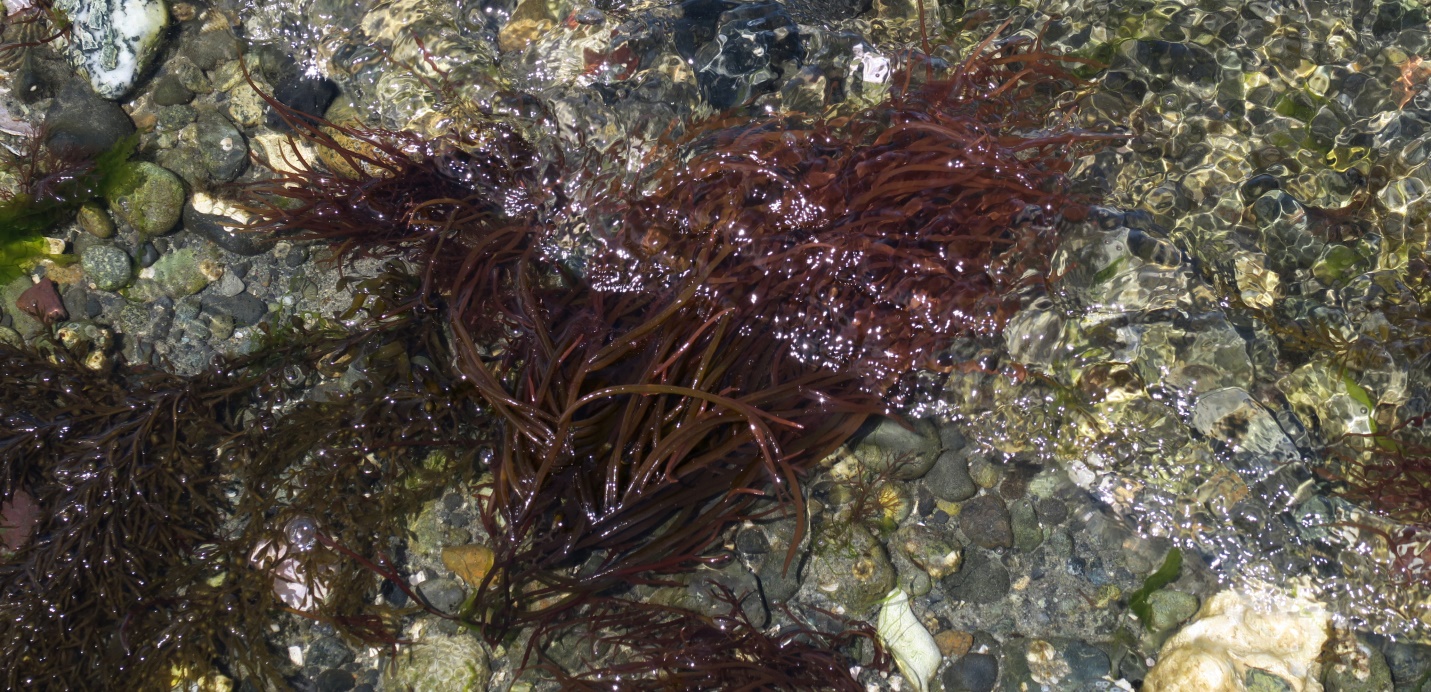
Figure 3: Sarcodiotheca gaudichaudii, Succulent Seaweed – a cluster of stems “sashay” with the incoming surf. Little Qualicum River Estuary, Strait of Georgia, B.C., Canada. July 5, 2020. Photo ID 27262 ©Seaweedwhisperings.com
Discussion:
Testing, trying out?
Or, is it better called experimenting?
No, experimenting sounds too structured; even testing sounds too concerned with right and wrong, too needful of correct action and procedure.
EXPLORING - that’s a much better fit!
Exploring has the general idea of going off into the unknown. And with this seaweed’s type of exploring there is also the need to have a way to find the way back or to know from which direction the journey originated. An explorer needs their compass; a way to orient their position in new lands/seas and to chart further courses.
Straight branches, stiff reach, this felt like the wings of swifts and hummingbirds. This structure, no joint at the “elbow”, gives special abilities to swifts and hummingbirds, i.e., fastest flight, hovering flight, upside down flight. What does it give Succulent Seaweed? It seems it is the ability to sashay and twirl and interact with the forces of the intertidal elements.
Twirl – is the safety; it has an anchor point.
Sashay – is the broader exploration.
So, exploration with safety (an orientation point) AND done with a dance-like movement.
One downside in this energy can arise from lack of awareness or simply from the newness of first experiences that is inherent to genuine exploration. Ignorance or naïveté can get you into trouble. “Into trouble” is the term to be used because there is a strong element of youthfulness in this energy and a juvenile terminology fits perfectly. Sashay is defined as a walk with an exaggerated movement of the hips and shoulders. It is not difficult to see where this can spill over into sensual and sexual expression. There can be exploration and interaction and newness of experience here and with that naturally comes a lack of maturity and caution. .
Explorations are happening, yes, but not very deeply. One could say the exploration is at a relatively superficial level but that is linked to the ‘pleasure in interaction’ concept. If that pleasure and interaction is present, then all is good for Sarcodiotheca. That may be their “litmus test”, so to speak. Probably carefully evaluating and reviewing is not a driving factor; there is testing and there is noted feedback such as, oh, that worked, or oops, that didn’t. However asking “why did that work?” or “why didn’t that work?” thoughts like that are not entertained much, yet. Again there doesn’t quite seem to be the drive to mature in efforts or abilities – it is the drive to explore, to test out, and to explore some more.
It’s a talent of this seaweed’s type of nature to explore, but it’s also not really interested in, thus not very capable of, deeper analysis. It was with humor that we thought, oh, can’t seem to go deeper – this is because it floats! This seaweed is too buoyant to be able to sink down and truly explore depths.
Those stiff branches/arms of the Succulent Seaweed remind us of the modern-day “noodles” given as floatation aids to new swimmers.
The buoyant physical structure carries over into the personality and attitude; there, too, it seems cheerful, happy, quite carefree and lighthearted – in a word, buoyant.
Slippery – Succulent Seaweed isn’t deliberately evasive but the result of trying to ‘pin down’ this seaweed to a rationale, a point of view, a single preference will usually be unsuccessful. Answers given will be vague, such as “because” or “because I want to” if you ask “why are you dressing like that?” or “why did you do that?”
At the extreme this type of energy can feel deliberately evasive, but the reality is that they actually don’t know why. That would require a deeper understanding, therefore answers can seem to pop out in all directions, leading everywhere and nowhere.
This seaweed is shiny. The shine is related to how light will reflect better off of a smooth surface (just like straight hair is shinier than curly hair). It seems that Sarcodiotheca gaudichaudii has absorbed enough light that it has extra to “give out” and “share with the world”, too.
The learning for this seaweed is to navigate the area between naïveté and maturity –to find direction and orientation and to begin to manifest learning into deeper understanding and life experience. It seems, though, that the ability to meet explorations with wide-eyed innocence will also not be surrendered – sashaying and twirling and interacting with the elements is still very much “what they are made of”.
Leaving the seashore: we finished our interactions in the early morning hours. It was still full dark and the sky was lit only by stars. Perhaps the ‘orientation’ abilities of this seaweed gave us an assist, because we had no trouble finding the section of the shoreline where our vehicle was parked!
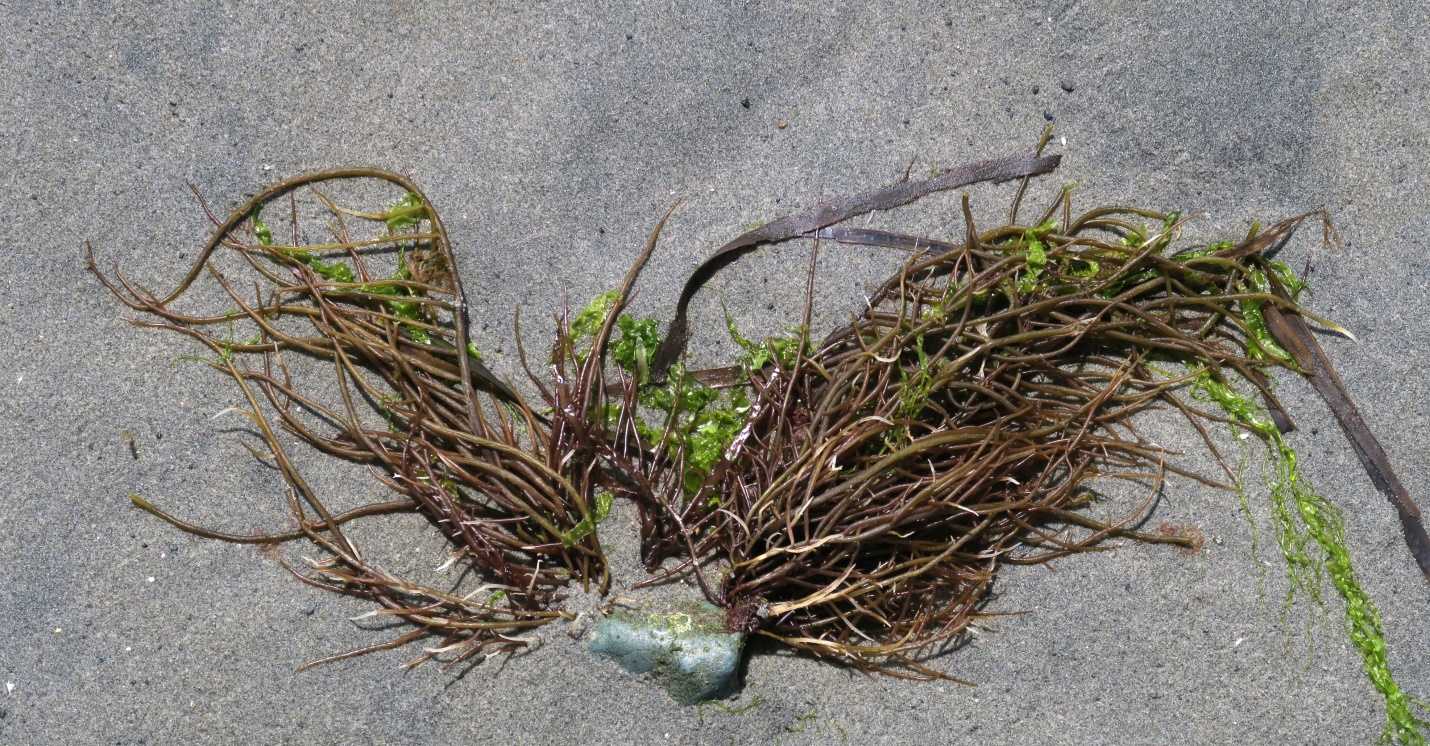
Figure 4: This photo depicts the habitat of Sarcodiotheca gaudichaudii very well – it prefers to grow on rocks, shells and cobbles surrounded by sand. The individuals here are beginning their summer ‘bleaching’ and color now ranges from off white, through olive green, to deep burgandy red. July 5, 2020. Little Qualicum River Estuary, Strait of Georgia, B.C., Canada. Photo ID 27263 ©Seaweedwhisperings.com
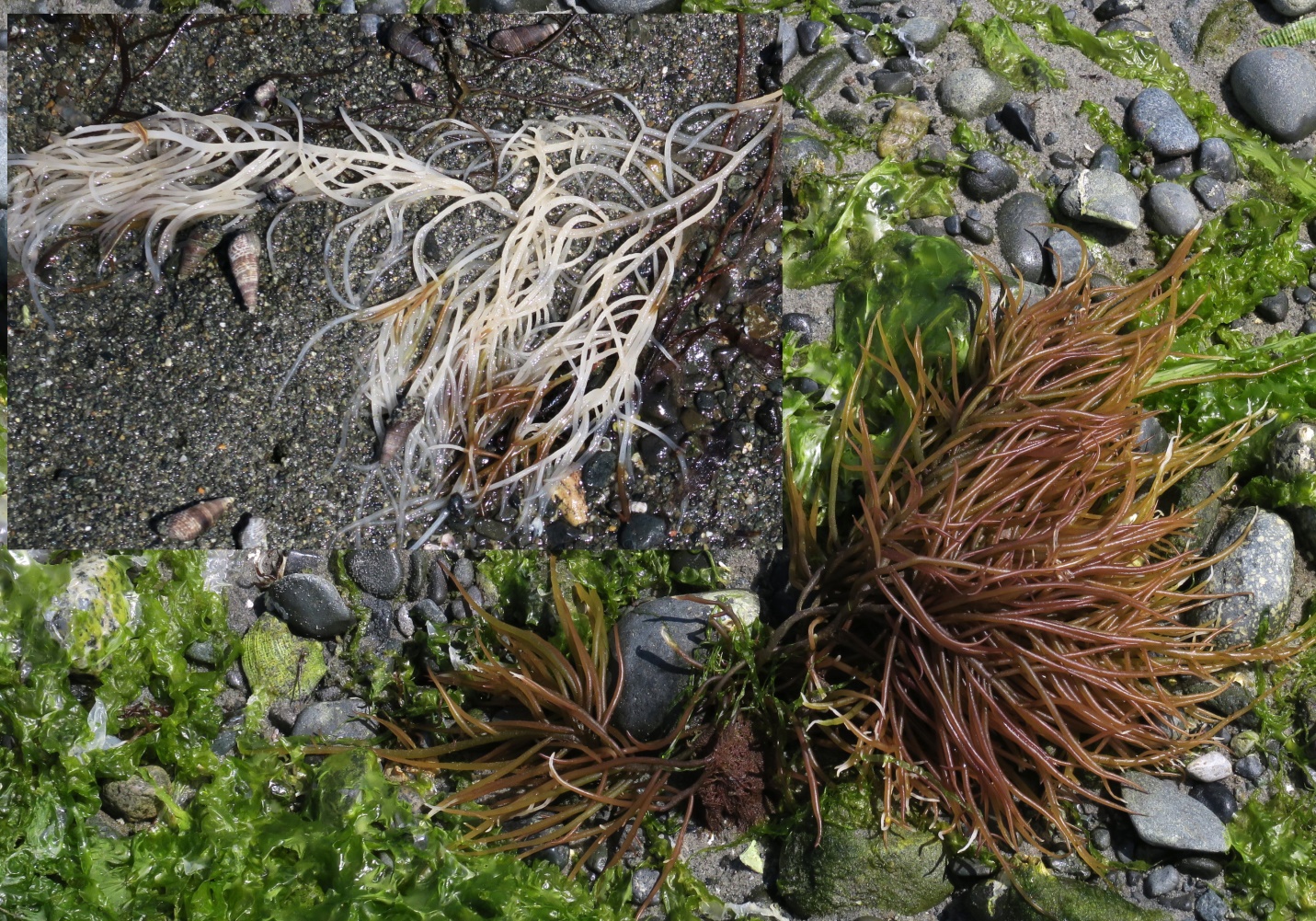
Figure 5: Color variations and seasonal bleaching of Succulent Seaweed. July 5, 2020. Little Qualicum River Estuary, Strait of Georgia, B.C., Canada. Photo ID 27264 ©Seaweedwhisperings.com
Biology & Natural History Information:
Habitat:
Grows on rocks, often embedded in sand, and other hard substrates including smaller stones and shells in lower intertidal and subtidal (to 18m/60feet deep).
Description:
Slender, cylindrical, somewhat fleshy thallus supports many rather brittle fronds, laterals tapering both at their bases and tips. The thallus attaches to the substrate with a discoid holdfast. The whole plant is pale pink to deep red or reddish brown in color and the cylindrical, fleshy, pointed-tipped branches may be opposite or grow from all angles of the main axis (radial). Succulent Seaweed can grow from 10 to 45cm tall. Some authors describe the plant as looking like a “cluster of translucent noodles” and it is noted that this species often grows in clumps. This seaweed will “bleach” to straw yellow or even white in the summer.
Pacific Coast Distribution:
Ketchikan, Alaska (southern tip of Alaska), to Baja California. Also found in the Galapagos Islands, Peru, Chile as well as the south coast of England where it was likely introduced.
Classification:
Phylum: Rhodophyta
Class: Florideophyceae
Order: Gigartinales
Family: Solieriacea
Genus: Sarcodiotheca
Species: Sarcodiotheca gaudichaudii (Montagne) P.W.Gabrielson 1982
Previous name(s): Basionym; Gigartina gaudichaudii Montagne 1842
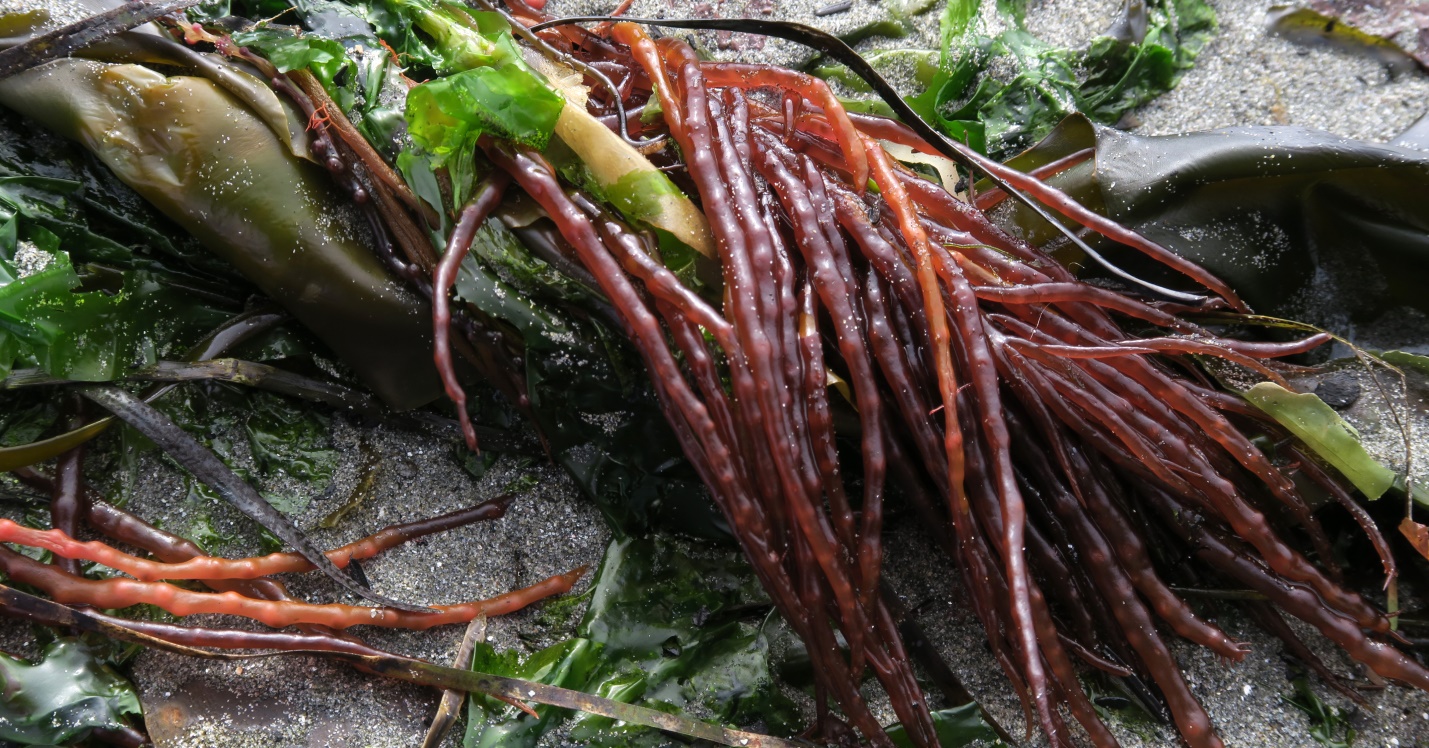
Figure 6: Sarcodiotheca gaudichaudii, Succulent Seaweed, is seen here mixed in with other macro algae in the wrack line at Fishboat Bay. This individual is exhibiting the cystocarpic stage – cystocarps (in this species the spherical bumps bulging within the branches) are the fruiting structure produced in red algae after fertilization. August 18, 2020. Photo ID 27265 ©Seaweedwhisperings.com
![]()